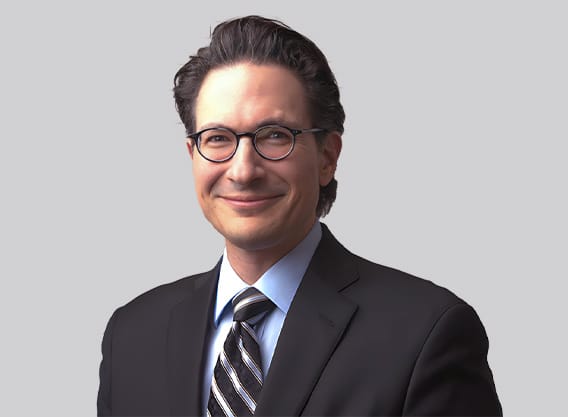Gynecomastia, the condition that causes enlarged breasts in men, can be an embarrassing problem for men of any age. This condition is not at all uncommon. In fact, around 50% of men will develop gynecomastia at some point during their lives. Sometimes, gynecomastia is temporary, and eventually goes away on its own. Even when the changes to the chest area are permanent, however, you don’t have to let gynecomastia get in the way of your self-confidence. Advanced technology paired with a skilled cosmetic surgeon can transform a soft, feminine chest into the firm, masculine chest you desire.

At Premier Image Cosmetic and Laser Surgery in Atlanta, GA, our experienced board-certified cosmetic surgeons use state-of-the-art technology to perform gynecomastia surgery, or male breast reduction.

What is Gynecomastia?
Breast enlargement is common in boys during puberty, older men, and in some cases, newborns. It is caused by changes in hormone levels, and often self-corrects when and if hormones stabilize. However, it can have a lasting psychological impact and affect a person’s self-confidence.
While overweight men often experience breast enlargement, there are actually two possible causes for this: additional breast tissue from a hormone imbalance, or excess fat. The issue can also be a combination of both issues. When fat, not breast tissue, is causing enlargement of the chest area, the condition is known as pseudogynecomastia. Pseudogynecomastia often requires different treatment than true gynecomastia.

What is Gynecomastia Surgery?
Breast tissue is made up of fat, which is soft, and glandular tissue, which is firm and dense. The ratio of the two types of tissue varies between individuals. Some men have both excess fat and glandular tissue while others have too much of just one type of breast tissue.
Breast reduction surgery consists of liposuction, which removes the excess fatty tissue, and gland excision, which removes unwanted firm breast tissue. Liposuction involves making a tiny incision and inserting a small tube to remove the fat. Glandular tissue excision refers to the use of a scalpel to remove the excess tissue. In some cases, only one of the two procedures are used to reduce the breast size and create a firmer, more masculine chest.
Who Is a Good Candidate for Gynecomastia?
How can you tell if you are a good candidate for male breast reduction? Gynecomastia surgery is appropriate for men who have excess fat and breast tissue in the chest. Ideal candidates are men who wish to transform enlarged breasts into a flat, firm chest and are:
- Emotionally prepared for the changes associated with surgery
- At or close to their ideal body weight
- Over the age of 18 with good skin elasticity
If you have a chronic disease, smoke, or have serious medical conditions, you may not be a good candidate for surgery. Your plastic surgeon has the final call on whether or not the surgery is safe and appropriate for your needs.
Why Have Gynecomastia Surgery?
While losing weight can help to reduce the fatty tissue in male breasts for some, this alone often does not solve the issue completely. Glandular tissue cannot be reduced by weight loss alone. In these cases, male breast reduction should be considered, as it is the only long-lasting, if not permanent, solution to gynecomastia.
If having enlarged breasts is causing you psychological stress, male breast reduction is a great option to consider. With the help of a reputable, board-certified plastic surgeon this procedure offers almost immediate results and minimal scarring.
The Gynecomastia Consultation
The consultation is a key part of the male breast reduction process. First, you will meet a patient care coordinator who will guide you through the process of having plastic surgery. Then you will meet with a board-certified body plastic surgeon. This meeting serves a number of purposes. It allows us to see if you are a good candidate for surgery and to understand what your expectations are. You will also have a chance to “try on” the procedure and get an idea of what your chest will look like after surgery.
When you meet with your cosmetic surgeon, they will discuss your medical history with you to see if you are healthy enough to have surgery. Then, they will ask you about your expectations and exactly what you would like to see changed.
Next, they will do an exam of the breast tissue to uncover the ratio of fat to glandular tissue. You will have an opportunity to ask questions and discuss any concerns you may have about the treatment, so be sure to come prepared. You should get everything you need to make an informed decision about gynecomastia surgery after your consultation.
Patient Reviews
The Gynecomastia Procedure
First, you’ll be given local anesthesia with intravenous sedation or general anesthesia depending on your preference. Your cosmetic surgeon will help determine the right option for you.
After anesthesia, our surgeons perform one of two techniques: liposuction or excision, or both. Liposuction is used when the breasts are made up of primarily excess fat. In this case, we insert a thin tube through small incisions on the chest to suction out the excess fatty tissue from the breast.
The other technique used is excision. This method is recommended when the breast is composed of primarily glandular tissue. In this case excess skin will need to be removed to correct the enlarged breast. Also, when repositioning the nipple or reducing the areola, excision is the method used.
Often times, a combination of the two techniques are used. Regardless, the method or combination of methods is discussed in the consultation. Our cosmetic surgeons take the time to explain the process that will be used so that you always know exactly what to expect.
Gynecomastia Surgery After Care
During your gynecomastia surgery recovery, dressings or an elastic bandage will be applied to allow for proper healing. Sometimes an additional support vest is recommended in order to minimize swelling and to help ensure your new chest heals with the proper contour.
Your surgeon will explain in advance when you can resume to normal daily activity and exercise. Prior to your surgery, you will be provided with specific aftercare instructions including:
- What types of medications will be prescribed and how to use them properly
- When dressings, bandages, and any stitches will be removed
- When you will return for a follow-up care
Gynecomastia Surgery FAQS
Typically, recovery takes about two weeks. You should take off at least one week from school or work. However, some people need longer. Your surgeon will give you specific instructions based on your situation.
Gynecomastia surgery results are typically permanent. Once excess fat and glandular tissue are removed, the breast area should maintain its new contour, provided that you maintain a healthy lifestyle. Significant weight gain, certain medical conditions, and steroid use can cause gynecomastia to reoccur.
There are two main options for anesthesia used during gynecomastia surgery. Local anesthesia with sedation and general anesthesia. Your surgeon can recommend the best option for you during your consultation.
Choosing a surgeon is the most important decision you will make in the gynecomastia surgery process. Before anything else, make sure surgeons you are considering have their board certification. Your cosmetic surgeon should be board certified by the American Board of Plastic Surgery or the American Board of Facial Plastic and Reconstructive Surgery. It is also extremely important to choose a surgeon you can trust, and whose work you admire.
If you live near Sandy Springs, GA, Premier Image Cosmetic and Laser Surgery offers gynecomastia among its services, and is conveniently located at 6085 Barfield Rd #100 Sandy Springs, GA 30328
Schedule Today – Premier Image Cosmetic & Laser Surgery
Call Premier Image Cosmetic and Laser Surgery today at (770) 457-6303 to discuss your needs and schedule a complimentary consultation in Atlanta, GA.


